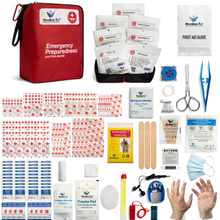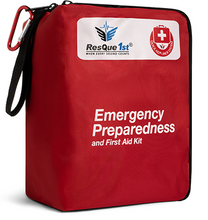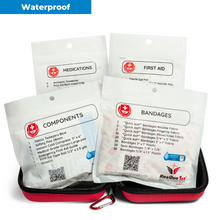
We love our pets as much as we love many of the people in our lives. Therefore, it's important to understand how to help them in an emergency situation. Here are a few of the most common first aid issues pet owners experience, and how to deal with them effectively.
Animal First Aid - How to Deal with Common First Aid Situations
-
Choking: If your pet is having difficulty breathing, is making choking sounds while they breathe, is coughing excessively, is pawing at their mouth, or has blue tinged lips or tongue, it's likely an object is blocking their airway. This is an emergency. Find someone to bring you and your pet to the veterinarian immediately.
Assess if your pet is still able to breathe. If they can, keep them calm and bring them to your veterinarian. If they can't, look in their mouth to see if a foreign object is visible. If you can, use pliers to gently pull it out. If you can't see the object, or if you can't remove it without pushing it further in the airway, try to dislodge it from the outside. Lay your pet on its side and use the palm of your hand to strike its rib cage three to four times. Repeat this until the object moves or until you reach your vet.
- Bleeding: If your pet is wounded and bleeding externally, reach for your first aid kit. Your pet is more likely to bite when they are in pain, so consider using a muzzle. Next, use a thick gauze pad and your hand to keep pressure over the bleeding area. Hold pressure for 3-5 minutes before checking to see if clotting has occurred. If the bleeding is severe or does not stop, bring your pet to a veterinarian.
- Poisoning: Generally speaking, anything that is harmful to you is harmful to your pet. Additionally, some substances that are safe for humans are toxic to some animals. If you believe your pet has ingested something harmful, contact your veterinarian immediately for guidance. You can also contact the Animal Poison Control Center hotline at 888-426-4435. Be ready to tell them your pet's species, breed, sex, weight, and age. They'll also want to know what your pet ingested and any symptoms they're having.
- Heat Stroke: Heat stroke occurs when an animal's body is unable to deal with excessive heat. This is extremely common in dogs left in cars on hot days. Avoiding heat stroke by staying diligent about your dog's environment is the most effective course of action. If your dog does show signs of heat stroke (excessive panting, drooling, agitation, increased heart rate, and trouble breathing), get them out of the sun and in a cool area immediately. Place a cold wet towel around its neck and head (don't cover the nose and eyes). Rewet the towel every few minutes. Pour cool water over your pets abdomen and between the hind legs to help absorb heat. Contact your veterinarian for further instructions, and to find out if you should bring your pet in for further assistance.









